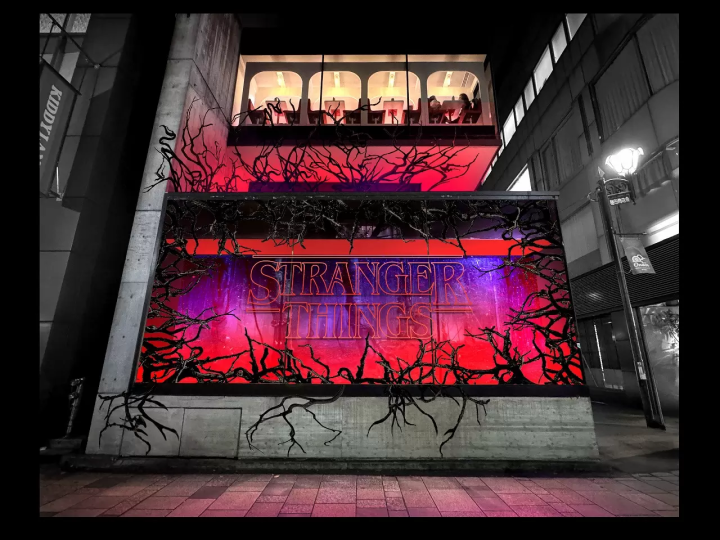[Setsubun] Setsubun-kai, Hojuji Temple, close to Kyoto Station where you can feel Kyoto
![[Setsubun] Setsubun-kai, Hojuji Temple, close to Kyoto Station where you can feel Kyoto](https://resources.matcha-jp.com/resize/720x2000/2024/02/06-165535.webp)
If you come to Kyoto during the Setsubun season, be sure to go to the Setsubun festivals held in various places. This time, we went to Hojuji Temple, which is easily accessible from Kyoto Station. The Setsubun Festival held at shrines and temples in Kyoto varies depending on each temple or shrine. Please come and experience the various Setsubun festivals.
If you come to Kyoto for Setsubun, go to the Setsubun festivals held in various places.
Special events are held at temples and shrines in Kyoto. It is an event to ward off evil spirits, epidemics, natural disasters, etc., and bring in good fortune.
Lively events are held around Setsubun, which falls on February 3rd, around the time of Setsubun, which includes a memorial ceremony to exorcise demons, geisha and maiko, and bean-throwing by young men and women. Mibu-dera Temple and Yoshida Shrine are famous. Click here for a list of Setsubun festivals held in Kyoto.
I think each family has a designated shrine or temple called Coco. By the way, my family is going to visit Yoshida Shrine. This year, since I had some business to do near Kyoto Station, I visited the Setsubun Festival at Hojuji Temple.
Following the tengu, red, black, and blue demons appear.
They swing their feet to the beat of the drums and move around the gomadan as if dancing, stepping powerfully. Zenzai made with rice cakes rolled by the maiko will be served. After Onihoraku, the maiko will hand out beans.
![[Setsubun] Setsubun-kai, Hojuji Temple, close to Kyoto Station where you can feel Kyoto](https://resources.matcha-jp.com/resize/720x2000/2024/02/06-165556.webp)
The tengu will serve you some bamboo sake at the end.
![[Setsubun] Setsubun-kai, Hojuji Temple, close to Kyoto Station where you can feel Kyoto](https://resources.matcha-jp.com/resize/720x2000/2024/02/06-165538.webp)
About Hojuji Temple
Hojuji Temple is a valuable temple that conveys the history and culture of the Heian period. You can follow in the footsteps of Cloistered Emperor Goshirakawa.
Hojuji Temple was founded by the Cloistered Emperor Goshirakawa, and was the site of many historical events, including the Hokke Hakko ceremony and the memorial service for the opening of the five-storied pagoda.
About the history of Hojuji Temple and its relationship with Cloistered Emperor Goshirakawa
Hojuji Temple is a temple founded by Fujiwara no Tamemitsu during the Heian period. Lord Tamemitsu built this shrine to pray for the bodies of his wife and daughter, Shoko. Shoko was the empress of Emperor Hanayama, but died young. Unable to bear the grief, the Emperor became a priest and became the Cloistered Emperor.
Hojuji Temple originally had many temples and pagodas on a vast site, but it gradually declined due to fires and wars. However, it was revived during the era when Emperor Goshirakawa ruled. Emperor Goshirakawa chose the site of Hoju-ji Temple as his Imperial Palace, and built the Shinzo Imperial Palace and Rengeo-in Temple. Rengeo-in Temple has Sanjusangen-do Hall, which still exists today. A thousand Kannon statues are enshrined here.
Emperor Goshirakawa was a strong believer in Buddhism, praying to the gods of Hiyoshi and Kumano, and moving Myohoin Temple to Mt. Hiei. He also became a monk, became the Cloistered Emperor, and devoted himself to Buddhist services. It is said that Hojuji Temple was named after the Buddhist name of Cloistered Emperor Goshirakawa.
The Cloistered Emperor passed away at Rokujoden and was buried in Hokke-do Hall of Hoju-ji Temple. Until the Meiji Restoration, as the inke of Myoho-in Temple, it protected the Shogun Fudoson and the tomb of Emperor Goshirakawa, but after the Meiji Restoration, it was renamed Daikotoku-in Temple and enshrined the statue of Amida Nyorai and the seated statue of Shonin made by Shinran Shonin. Did. As a temple with deep roots in the founding of the Jodo Shinshu sect, it has inherited practices of ascetic practices such as the Daigomaku ritual. In 1955, it was renamed Hojuji Temple.
Annual: When I visited Yoshida Shrine's Setsubun Festival, this was it!
This year too, my mother went to Yoshida Shrine's Setsubun Festival.
If you go to Yoshida-san, be sure to buy this sweet that can only be bought on Setsubun as a souvenir.
Setsubun Festival limited edition! "Oni's Raw Yatsuhashi"

Setsubun Festival limited edition! "Kesou Mochi"
![[Setsubun] Setsubun-kai, Hojuji Temple, close to Kyoto Station where you can feel Kyoto](https://resources.matcha-jp.com/resize/720x2000/2024/02/06-165644.webp)
Speaking of Setsubun Festival in February, Nishio is famous for ``Kesou Mochi''.
Koimochi is a red and white fluffy rice cake that comes from Suga Shrine's ``Kensobun,'' a talisman for success in love . The white mochi has bright green Japanese grass bean paste in it, and the pink mochi has white bean paste in it, giving it a mildly sweet and elegant taste. For two days only during the Setsubun Festival, it will be sold exclusively at three stores: the main store, Kumano store, and Kumano Shrine tea shop!
Both can be enjoyed as souvenirs that bring good luck to those who have visited the shrine, and because they can only be eaten on Setsubun every year.
editor:Hiroko Chino
Our "ambassadors" will guide you through Kyoto's cultural tourism in a variety of languages, drawing on their own experiences and knowledge. We can accommodate requests for standard courses or special, bespoke one-day courses, to help you create unforgettable days in Kyoto, providing you with the opportunity to learn about and experience shrines, temples, and gardens, modern architecture, food culture, traditional performing arts, and more, as well as meet the local encounters that will create the best memories. In addition to guided tours, we offer special experiences, from events utilizing unique venues to plans that allow you to fully enjoy Kyoto culture throughout the seasons.
The contents on this page may partially contain automatic translation.
































![[2026 Edition] FORMUAL 1 JAPANESE GRAND PRIX Information](https://resources.matcha-jp.com/resize/720x2000/2025/10/05-245984.webp)


![[2025 Update] Namba's spectacular illuminations! "Namba Hikari Tabi" with approximately 1 million shining lights](https://resources.matcha-jp.com/resize/720x2000/2025/12/12-252825.webp)